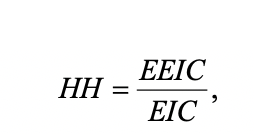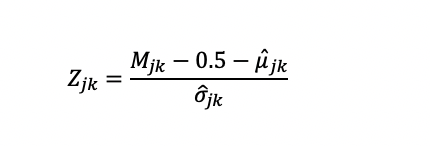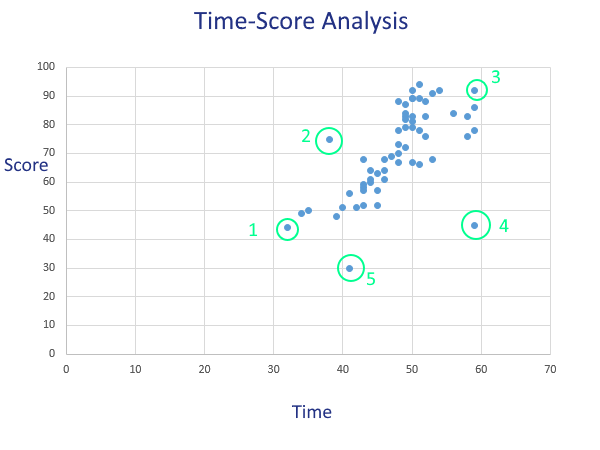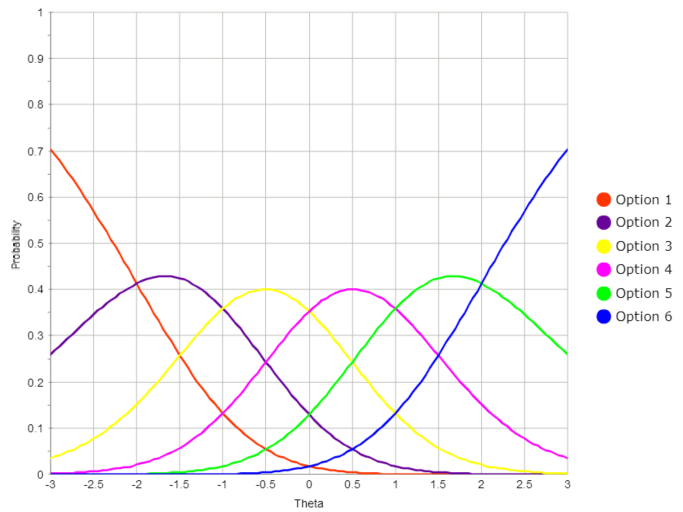
ASC’s Blog: Resources on Assessment, Psychometrics, & Edtech
ASC continually posts new resources and articles on our blog, covering industry news, scholarly conferences, and discussions of important psychometric concepts. See the most recent articles in the blog below.

Harpp, Hogan, & Jennings (1996): Response Similarity Index
Harpp, Hogan, and Jennings (1996) revised their Response Similarity Index somewhat from Harpp and Hogan (1993). This produced a new…

Harpp & Hogan (1993): Response Similarity Index
Harpp and Hogan (1993) suggested a response similarity index defined as Response Similarity Index Explanation EEIC denote the number of…

Bellezza & Bellezza (1989): Error Similarity Analysis
This index evaluates error similarity analysis (ESA), namely estimating the probability that a given pair of examinees would have the…

Frary, Tideman, & Watts (1977): g2 Collusion Index
The Frary, Tideman, and Watts (1977) g2 index is a collusion (cheating) detection index, which is a standardization that evaluates…

Wollack 1997 Omega Collusion Index
Wollack (1997) adapted the standardized collusion index of Frary, Tidemann, and Watts (1977) g2 to item response theory (IRT) and…

Wesolowsky (2000) Zjk Collusion Detection Index
Wesolowsky’s (2000) index is a collusion detection index, designed to look for exam cheating by finding similar response vectors amongst…

Response Time Effort
Wise and Kong (2005) defined an index to flag examinees not putting forth minimal effort, based on their response time. …

Holland K Index and K Variants for Forensics
The Holland K index and variants are probability-based indices for psychometric forensics, like the Bellezza & Bellezza indices, but make…

Guttman Errors: Additional Insight into Examinees
Guttman errors are a concept derived from the Guttman Scaling approach to evaluating assessments. There are a number of ways…

Identifying Threats To Test Security
Test security is an increasingly important topic. There are several causes, including globalization, technological enhancements, and the move to a…

Flag Exam Cheating with Time-Score Analysis
Psychometric forensics is a surprisingly deep and complex field. Many of the indices are incredibly sophisticated, but a good high-level and…

What is a Psychometrician? Definition, roles, & careers.
A psychometrician is a data scientist who studies how to develop and analyze exams so that they are reliable, valid,…

What can Machine Learning tell us about our item banks?
Artificial intelligence (AI) and machine learning (ML) have become buzzwords over the past few years. As I already wrote about,…

Ways the Word “Standard” is used in Assessment
If you have worked in the field of assessment and psychometrics, you have undoubtedly encountered the word “standard.” While a…

The Generalized Partial Credit Model (GPCM)
The generalized partial credit model (GPCM, Muraki 1992) is an item response theory (IRT) model designed to work with items…

R for psychometrics
If you are dealing with data science, which psychometrics most definitely is, you’ve probably come across R. It is an…

Subject Matter Experts (SME) in Exam Development
Subject matter experts (SME) are an important part of the process in developing a defensible exam, especially in the world…

Is teaching to the test a bad thing?
One of the most cliche phrases associated with assessment is “teaching to the test.” I’ve always hated this phrase, because…
